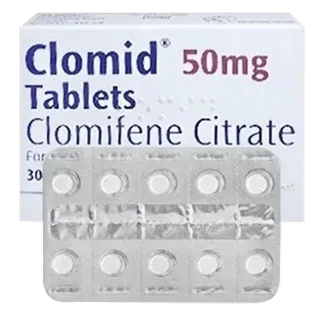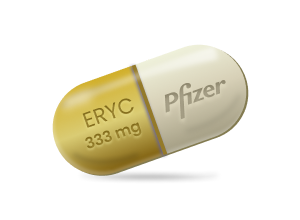
ERYC capsules contain enteric-coated pellets of erythromycin base for oral administration.
Erythromycin is indicated in the treatment of infections caused by susceptible strains of the designated organisms in the diseases listed below:


Eryc
| Package | pill | Total price | Save | Order |
|---|---|---|---|---|
| 500mg × 30 Pills | $1.35 | $40.64 | - | Add to cart |
| 500mg × 60 Pills | $1.10 | $65.93 | $15.00 | Add to cart |
| 500mg × 120 Pills | $0.97 | $116.53 | $45.60 | Add to cart |
| 500mg × 240 Pills | $0.91 | $217.74 Free Trackable Delivery | $105.60 | Add to cart |
| 500mg × 300 Pills | $0.89 | $268.34 Free Trackable Delivery | $138.00 | Add to cart |
| Package | pill | Total price | Save | Order |
|---|---|---|---|---|
| 250mg × 30 Pills | $1.20 | $36.03 | - | Add to cart |
| 250mg × 60 Pills | $0.95 | $56.73 | $15.00 | Add to cart |
| 250mg × 120 Pills | $0.82 | $98.13 | $45.60 | Add to cart |
| 250mg × 240 Pills | $0.75 | $180.93 | $108.00 | Add to cart |
| 250mg × 300 Pills | $0.74 | $222.33 Free Trackable Delivery | $138.00 | Add to cart |
Your order will be packed safely and securely and dispatched within 24 hours. This is exactly how your parcel will look like (pictures of a real shipping item). It has the size and the look of a regular private letter (9.4x4.3x0.3 inches or 24x11x0.7cm), and it does not disclose its contents



Upper respiratory tract infections of mild to moderate degree caused by Streptococcus pyogenes, Streptococcus pneumoniae, or Haemophilus influenzae (when used concomitantly with adequate doses of sulfonamides, since many strains of H. influenzae are not susceptible to the erythromycin concentrations ordinarily achieved).
Lower respiratory tract infections of mild to moderate severity caused by Streptococcus pneumoniae or Streptococcus pyogenes.
Listeriosis caused by Listeria monocytogenes.
Pertussis (whooping cough) caused by Bordetella pertussis. Erythromycin is effective in eliminating the organism from the nasopharynx of infected individuals rendering them noninfectious. Some clinical studies suggest that erythromycin may be helpful in the prophylaxis of pertussis in exposed susceptible individuals.
Respiratory tract infections due to Mycoplasma pneumoniae.
Skin and skin structure infections of mild to moderate severity caused by Streptococcus pyogenes or Staphylococcus aureus (resistant staphylococci may emerge during treatment).
Diphtheria: Infections due to Corynebacterium diphtheriae, as an adjunct to antitoxin, to prevent establishment of carriers and to eradicate the organism in carriers.
Erythrasma: In the treatment of infections due to Corynebacterium minutissimum.
Syphilis caused by Treponema pallidum: Erythromycin is an alternate choice of treatment for primary syphilis in penicillin-allergic patients. In primary syphilis, spinal fluid examinations should be done before treatment and as part of follow-up after therapy.
Intestinal amebiasis caused by Entamoeba histolytica (oral erythromycins only). Extraenteric amebiasis requires treatment with other agents.
Acute pelvic inflammatory disease caused by Neisseria gonorrhoeae: Erythromycin lactobionate for injection, USP followed by erythromycin base orally, as an alternative drug in treatment of acute pelvic inflammatory disease caused by N. gonorrhoeae in female patients with a history of sensitivity to penicillin. Patients should have a serologic test for syphilis before receiving erythromycin as treatment of gonorrhea and a follow-up serologic test for syphilis after 3 months.
Erythromycins are indicated for the treatment of the following infections caused by Chlamydia trachomatis: conjunctivitis of the newborn, pneumonia of infancy, and urogenital infections during pregnancy. When tetracyclines are contraindicated or not tolerated, erythromycin is indicated for the treatment of uncomplicated urethral, endocervical, or rectal infections in adults due to Chlamydia trachomatis.
When tetracyclines are contraindicated or not tolerated, erythromycin is indicated for the treatment of nongonococcal urethritis caused by Ureaplasma urealyticum.
Legionnaires' Disease caused by Legionella pneumophila. Although no controlled clinical efficacy studies have been conducted, in vitro and limited preliminary clinical data suggest that erythromycin may be effective in treating Legionnaires' Disease.
Prophylaxis
Prevention of Initial Attacks of Rheumatic Fever: Penicillin is considered by the American Heart Association to be the drug of choice in the prevention of initial attacks of rheumatic fever (treatment of Streptococcus pyogenes infections of the upper respiratory tract, e.g., tonsillitis or pharyngitis). Erythromycin is indicated for the treatment of penicillin-allergic patients.3 The therapeutic dose should be administered for ten days.
Prevention of Recurrent Attacks of Rheumatic Fever: Penicillin or sulfonamides are considered by the American Heart Association to be the drugs of choice in the prevention of recurrent attacks of rheumatic fever. In patients who are allergic to penicillin and sulfonamides, oral erythromycin is recommended by the American Heart Association in the long-term prophylaxis of streptococcal pharyngitis (for the prevention of recurrent attacks of rheumatic fever).3
To reduce the development of drug-resistant bacteria and maintain the effectiveness of ERYC and other antibacterial drugs, ERYC should be used only to treat or prevent infections that are proven or strongly suspected to be caused by susceptible bacteria. When culture and susceptibility information are available, they should be considered in selecting or modifying antibacterial therapy. In the absence of such data, local epidemiology and susceptibility patterns may contribute to the empiric selection of therapy.
Overdosage
In case of overdosage, erythromycin should be discontinued. Overdosage should be handled with the prompt elimination of unabsorbed drug and all other appropriate measures.
Erythromycin is not removed by peritoneal dialysis or hemodialysis.
Storage
Store at controlled room temperature 15° C to 30° C (59° F to 86° F).
Safety information
Warnings
Hepatotoxicity
There have been reports of hepatic dysfunction, including increased liver enzymes, and hepatocellular and/or cholestatic hepatitis, with or without jaundice, occurring in patients receiving oral erythromycin products.
QT Prolongation
Erythromycin has been associated with prolongation of the QT interval and infrequent cases of arrhythmia. Cases of torsades de pointes have been spontaneously reported during postmarketing surveillance in patients receiving erythromycin. Fatalities have been reported. Erythromycin should be avoided in patients with known prolongation of the QT interval, patients with ongoing proarrhythmic conditions such as uncorrected hypokalemia or hypomagnesemia, clinically significant bradycardia, and in patients receiving Class IA (quinidine, procainamide) or Class III (dofetilide, aminodarone, sotalol) antiarrhythmic agents. Elderly patients may be more susceptible to drug-associated effects on the QT interval.
Syphilis in pregnancy
There have been reports suggesting that erythromycin does not reach the fetus in adequate concentration to prevent congenital syphilis. Infants born to women treated during pregnancy with oral erythromycin for early syphilis should be treated with an appropriate penicillin regimen.
Clostridium difficile-associated diarrhea
Clostridium difficile-associated diarrhea (CDAD) has been reported with use of nearly all antibacterial agents, including ERYC Capsules, and may range in severity from mild diarrhea to fatal colitis. Treatment with antibacterial agents alters the normal flora of the colon leading to overgrowth of C. difficile.
C. difficile produces toxins A and B which contribute to the development of CDAD. Hypertoxin producing strains of C. difficile cause increased morbidity and mortality, as these infections can be refractory to antimicrobial therapy and may require colectomy. CDAD must be considered in all patients who present with diarrhea following antibiotic use. Careful medical history is necessary since CDAD has been reported to occur over two months after the administration of antibacterial agents.
If CDAD is suspected or confirmed, ongoing antibiotic use not directed against C. difficile may need to be discontinued. Appropriate fluid and electrolyte management, protein supplementation, antibiotic treatment of C. difficile, and surgical evaluation should be instituted as clinically indicated.
Drug Interactions
Serious adverse reactions have been reported in patients taking erythromycin concomitantly with CYP3A4 substrates. These include colchicine toxicity with colchicine; rhabdomyolysis with simvastatin, lovastatin, and atorvastatin; and hypotension with calcium channel blockers metabolized by CYP3A4 (for example, verapamil, amlodipine, diltiazem).
There have been post-marketing reports of colchicine toxicity with concomitant use of erythromycin and colchicine. This interaction is potentially life-threatening, and may occure while using both drugs at their recommended doses.
Rhabdomyolysis with or without renal impairment has been reported in seriously ill patients receiving erythromycin concomitantly with lovastatin. Therefore, patients receiving concomitant lovastatin and erythromycin should be carefully monitored for creatine kinase (CK) and serum transaminase levels.
Disclaimer
The information on this page is not intended to be a substitute for professional medical advice. Do not use this information to diagnose or treat your problem without consulting your doctor.
Side effects
The most frequent side effects of oral erythromycin preparations are gastrointestinal and are dose-related. They include nausea, vomiting, abdominal pain, diarrhea and anorexia. Symptoms of hepatitis, hepatic dysfunction and/or abnormal liver function test results may occur.
Onset of pseudomembranous colitis symptoms may occur during or after antibacterial treatment.
Erythromycin has been associated with QT prolongation and ventricular arrhythmias, including ventricular tachycardia and torsade de pointes.
Allergic reactions ranging from urticaria to anaphylaxis have occurred. Skin reactions ranging from mild eruptions to erythema multiforme, Stevens-Johnson syndrome, and toxic epidermal necrolysis have been reported rarely.
There have been reports of interstitial nephritis coincident with erythromycin use.
There have been reports of pancreatitis and convulsions.
There have been isolated reports of reversible hearing loss occurring chiefly in patients with renal insufficiency and in patients receiving high doses of erythromycin.
Ventolin is a medicament for eliminating asthma attacks (bronchial) and other reversible diseases with bronchial obstruction.
The main active substance is salbutamol.
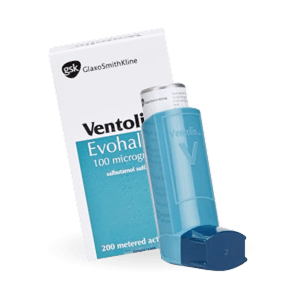
Brand Levitra – a drug from Bayer, with a basic chemical called Vardenafil, is an improved remedy for treating erectile difficulties. Operates approximately within 6-8 hours, so a man may be ready to perform sexually the whole night.

Brand Cialis improves erection and helps to achieve a successful sexual intercourse. It is the original medication, intended for use in adult men, who have problems with achieving and maintaining an erection. The pills start acting in 30 to 60 minutes. You can benefit from their effects for up to 36 hours. Therefore, you can take the pills on Saturday evening and enjoy a wonderful weekend, full of sex and pleasant emotions both for you and your partner. The active substance is Tadalafil.

Diflucan - antifungal medicine, possesses highly specific action, inhibiting activity of enzymes of fungus. It is taken at systemic lesions caused by fungus including meningitis, sepsis, infections of lungs and skin as at patients with a normal immune response, and at patients with various forms of immunosuppression.
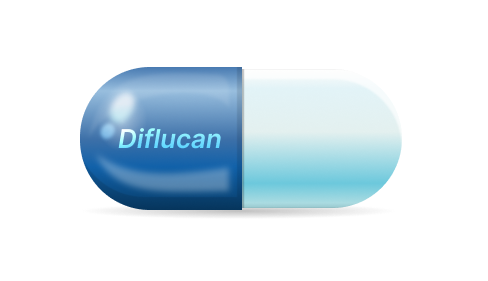
Sumycin - An antibiotic based on tetracycline, a brand of such pharmaceutical companies as Bristol-Myers Squibb, Apothecon, Par Pharmaceutical.
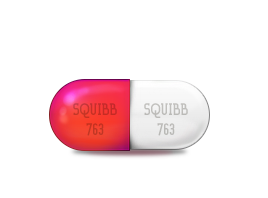
Tinidazole - an antibacterial agent for systemic intake, used for the treatment of diseases such as trichomoniasis, giardiasis, amoeba dysentery, anaerobic infection, mixed aerobic-anaerobic infections (in combination with appropriate antibiotics), prevention of postoperative anaerobic infections.
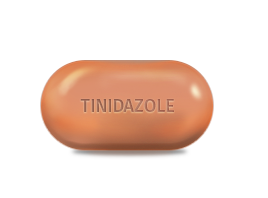
Cleocin has bacteriostatic and bactericidal activity depending on concentration of drug, infectious process and condition of an organism of the patient. Active against aerobic and anaerobic streptococcus (except for enterococci), the majority of staphylococcus except for methicillin-resistant strains, bacteroids except for Bacteroides melaninogenicus, spindle-shaped bacteria
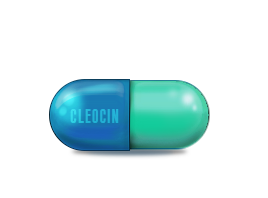
Aceon, which is perindopril - is prescribed at hypertensia, stroke prevention, chronic cardiac failure. Medicine has a vasorelaxant action, it reduces an afterload due to TPR relief, the medicine reduces resistance in vessels of lungs. It is observed increase of the minute volume of myocardium and increase tolerance of myocardium to strain. The medicine has the natriuretic effect and cardioprotection action. The effect of hypotension is observed in 60 minutes after taking the medicine. Arterial pressure loss isn't followed by development of tachycardia. The maximum therapeutic effect is observed in 4-8 hours, the effect is long-term (up to 24 hours). Perindopril improves brain, kidneys, and myocardium circulation, it reduces the needs of cardiomyocytes for oxygen at CHD.
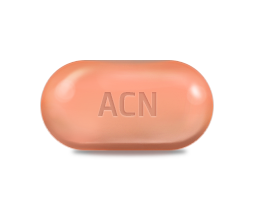
Zestoretic - tablets containing 12,5Mg of Hydrochlorothiazide and 10Mg of Lisinopril, as active ingredients. It is hypotensive, vasodilating, natriuretic, cardioprotective medical preparation.The drug is used to treat arterial hypertension, also in order to reduce the risk of cardiovascular disease and mortality in patients with hypertension and left ventricular hypertrophy, manifesting cumulative reduction in the incidence of cardiovascular death, incidence of stroke and myocardial infarction.
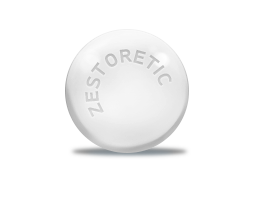
Lipitor refers to inhibitors of hydroxymethylglutaryl coenzyme A-reductase. It is used to lower the level of LDL cholesterol (bad cholesterol) in the blood, total cholesterol, triglycerides (another kind of fat) and apolipoprotein B (protein required for cholesterol production). Lipitor is also used to increase the blood cholesterol level of HDL cholesterol (good cholesterol). It is necessary to reduce the risk of hardening of the arteries, which can lead to heart attacks, strokes and peripheral vascular diseases.
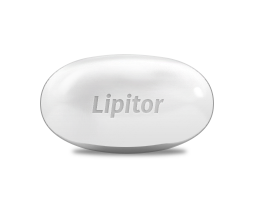
Caduet consists of Amlodipine besylate and atorvastatin calcium. Caduet has a double mechanism of action; action of amlodipin as dihydropyridinic antagonist of calcium and for suppression of atorvastatin HMG-CoA reductase. It is taken for prevention of cardiovascular events at patients with hypertension, with three concurrent factors of cardiovascular risk, with cholesterol level from normal to moderately raised, without clinical manifestations of ischemic heart disease and also when according to the existing recommendations about treatment the combined use of amlodipin and low dose of atorvastatin is deemed appropriate.
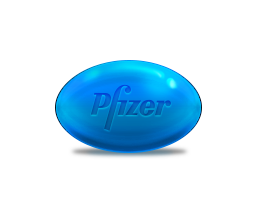
Fights diarrhea (acute and chronic of various genesis: allergic, emotional, drug, radiation, with a change in diet and quality of food, in violation of metabolism and absorption), used for regulation of stool in patients with ileostomy. Loperamide (the effective ingredient of Imodium) reduces the tone and motility of the smooth muscles of the intestine. Slows down the peristalsis and increases the transit time of intestinal contents. Increases the tone of the anal sphincter, promotes retention of fecal masses and reduced urge to defecate. The effect develops quickly and lasts for 4-6 hours.
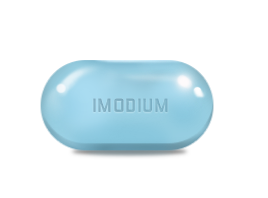
Strattera - the drug with an international non-proprietary name of the active substance - Atomoxetine, it is intended as a sympathomimetic agent for the prevention and treatment of attention deficit hyperactivity disorder (ADHD) in children 6 years of age and older, adolescents and adults.
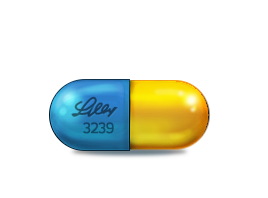
Plavix is an antiplatelet drug; specific and active inhibitor of platelet aggregation; has a coronary-dilating effect. The use of Plavix is indicated for the prevention of atherothrombotic complications in adult patients with myocardial infarction in adult patients with an acute coronary syndrome. The drug is also indicated to prevent atherothrombotic and thromboembolic complications, including a stroke, atrial fibrillation in patients with atrial fibrillation, who have at least one risk factor for vascular complications and who cannot take indirect anticoagulants and have a low risk of bleeding.
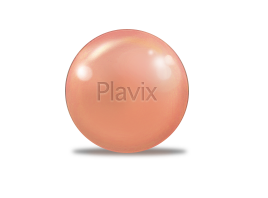
Tadapox includes two medications combined for an even more effective approach of the problem of erectile dysfunction. The first one, Tadalafil, is a mighty restorative agent that reverses a male’s inability to achieve a satisfyingly firm erection. The second component, Dapoxetine, handles the other side of clinical impotency that shows as untimely ejaculation. Tadapox successfully manages said issues in populations of patients from 18 to 64 years of age. Its unique mix of therapeutic characteristics helps men revitalize their sexual function in a comparatively short time.
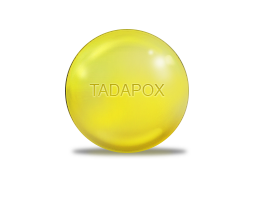
Haldol antipsychotic remedy, butyrophenone derivative. It has a powerful antipsychotic effect, moderate sedation. The mechanism of antipsychotic action of haloperidol is associated with the blockade of dopamine receptors in the mesocortex and limbic system.
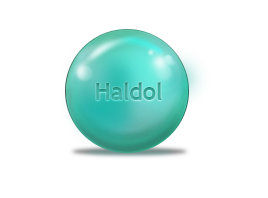
AyurSlim is a clinically tested, 100% safe natural slimming product with no side effects. Developed by Himalaya Herbal Healthcare, a leader in the production of herbal products based on scientific research, AyurSlim promotes weight loss and has a beneficial effect on fat structures. This plant product is safe and effective and is carefully studied by science. In addition, help to lose weight, it improves fat structure, which in turn helps to delay the appearance of cardiovascular problems, as well as the deposition of fat inside the arteries (cholesterol deposits), providing additional health benefits.

Clomid - anti-estrogen of nonsteroid structure which is taken for treatment of anovular infertility, dysfunctional metrorrhagia, amenorrhea, secondary amenorrheas, post-contraceptive amenorrheas, galactorrhoea (against the background of hypophysis tumor), syndrome of polycystic ovaries (sclerocystic disease of the ovary), Chiari-Frommel disease, androgenic insufficiency, oligospermatism, diagnosis of disturbances of gonadotropic function of hypophysis.
